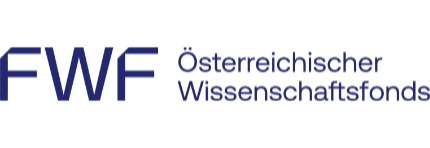
P5 | Journalism: Automating the news and journalistic autonomy
The project investigates ComAI’s involvement in journalism by analyzing the challenge of journalistic autonomy at the interactional, organizational, and societal levels.
We assume that journalism is particularly concerned with relationships between humans and machines within societal communication, a relation that this is also relevant to self-reflection and the appropriation of ComAI in the journalistic field. Our research is guided by four questions:
- How do journalists and other professional domain actors interact with ComAI and what agency do they construct in relation to it?
- What patterns exist within ComAI’s organizational embeddings and its related forms of hybrid agency
- How does ComAI relate to conceptions of news and objectivity, journalistic roles, audience relationships, and imaginaries of ComAI’s futures?
- How is ComAI appropriated in journalism, possibly challenging journalistic autonomy?
To answer these questions, a mixed-methods design is applied, consisting of ethnographies in three different types of media organizations in Germany, Austria and the UK as well as interviews, group discussions, and ethnographies at events and conferences.
PUBLICATIONS:
- Bernstein, A., de Vreese, C., Helberger, N., Schulz, W., Zweig, K., Baden, C., Beam, M. A., Hauer, M. P., Heitz, L., Jürgens, P., Katzenbach, C., Kille, B., Klimkiewicz, B., Loosen, W., Moeller, J., Radanovic, G., Shani, G., Tintarev, N., Tolmeijer, S., … Zueger, T. (2021). Diversity in news recommendation. Dagstuhl Manifestos, 9(1), 43–61. doi:10.4230/DagMan.9.1.43
- Hepp, A., & Loosen, W. (2021). Pioneer journalism: Conceptualizing the role of pioneer journalists and pioneer communities in the organizational re-figuration of journalism. Journalism, 22(3), 577–595. doi:10.1177/1464884919829277
- Hepp, A., & Loosen, W. (2022). Beyond innovation. Pioneer journalism and the re-figuration of journalism. In P. Ferrucci & S. A. Eldridge, The Institutions Changing Journalism (1st ed., pp. 118–135). Routledge. doi:10.4324/9781003140399-11
- Hepp, A., & Loosen, W. (2023). The interdisciplinarity of HMC: Rethinking communication, media and agency. In A. L. Guzman, S. Jones, & R. McEwen (Eds.), The SAGE handbook of human-machine communication (pp. 12–21). SAGE.
- Hepp, A., Loosen, W., Dreyer, S., Jarke, J., Kannengießer, S., Katzenbach, C., Malaka, R., Pfadenhauer, M. P., Puschmann, C., & Schulz, W. (2023). ChatGPT, LaMDA, and the Hype Around Communicative AI: The Automation of Communication as a Field of Research in Media and Communication Studies. Human-Machine Communication, 6, 41–63. doi:10.30658/hmc.6.4
- Hepp, A., Loosen, W., Dreyer, S., Jarke, J., Kannengießer, S., Katzenbach, C., Malaka, R., Pfadenhauer, M., Puschmann, C., & Schulz, W. (2022). Von der Mensch-Maschine-Interaktion zur kommunikativen KI: Automatisierung von Kommunikation als Gegenstand der Kommunikations- und Medienforschung. Publizistik, 67(4), 449–474. doi:10.1007/s11616-022-00758-4
- Loosen, W. (2015). The notion of the ‘blurring boundaries’. Journalism as a (de-)differentiated phenomenon. Digital Journalism, 3(1), 68–84. doi:10.1080/21670811.2014.928000
- Loosen, W. (2018). Four forms of datafied journalism. (18; Communicative Figurations Working Paper), Bremen. http://www.kommunikative-figurationen.de/fileadmin/redak_kofi/Arbeitspapiere/CoFi_EWP_No-18_Loosen.pdf
- Loosen, W. (2023a). Die (Transformation der) Beziehung Journalismus | Publikum systemtheoretisch revis(it)ed. In F. Muhle, T. Sutter, & J. Wehner (Eds.), Das sichtbare Publikum? (pp. 31–58). Springer VS.
- Loosen, W. (2023b). Journalismus als (ent-)differenziertes Phänomen. In M. Löffelholz & L. Rothenberger (Eds.), Handbuch Journalismustheorien (2. Auflage, pp. 1–14). Springer VS.
- Loosen, W., Ahva, L., Reimer, J., Solbach, P., Deuze, M., & Matzat, L. (2022). ‘X Journalism’. Exploring journalism’s diverse meanings through the names we give it. Journalism, 23(1), 39–58. doi:10.1177/1464884920950090
- Loosen, W., Reimer, J., & De Silva-Schmidt, F. (2020). Data-driven reporting: An on-going (r)evolution?. Journalism, 21(9), 1246–1263. doi:10.1177/1464884917735691
- Loosen, W., Reimer, J., & Hölig, S. (2020). What journalists want and what they ought to do. (In)Congruences between journalists’ role conceptions and audiences’ expectations. Journalism Studies, 21(12), 1744–1774. doi:10.1080/1461670X.2020.1790026
- Loosen, W., & Schmidt, J.-H. (2012). (Re-)Discovering the audience. Information, Communication & Society, 15(6), 867–887. doi:10.1080/1369118X.2012.665467
- Loosen, W., & Scholl, A. (Eds.). (2012). Methodenkombinationen in der Kommunikationswissenschaft. von Halem.
- Loosen, W., & Scholl, A. (2017). Journalismus und (algorithmische) Wirklichkeitskonstruktion. Medien & Kommunikationswissenschaft, 65(2), 348–366. doi:10.5771/1615-634X-2017-2-348
- Loosen, W., & Solbach, P. (2020). Künstliche Intelligenz im Journalismus? In T. Köhler (Ed.), Fake News, Framing, Fact-Checking: Nachrichten im digitalen Zeitalter (pp. 177–204). transcript Verlag.
- Sprengelmeyer, L., Reimer, J., Immler, H., Loosen, W., Behre, J., & Hölig, S. (2022). „Neutral vermitteln“ oder „ermächtigend berichten“? Strukturelle Unterschiede von journalistischem Rollenselbstverständnis und bevölkerungsseitigen Erwartungen. M&K, 70(3), 213–233. doi:10.5771/1615-634X-2022-3-213
Contact:
Prof. Dr. Andreas Hepp
ZeMKI, Center for Media, Communication and Information Research
University of Bremen
Phone: +49 421 218-67620
Assistent Mrs. Schober: +49 421 218-67603
E-mail: andreas.hepp@uni-bremen.de







